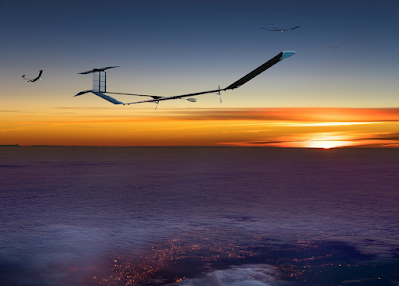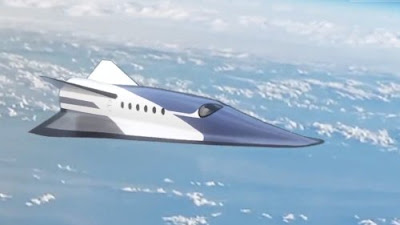AIRBUS' SOLAR POWERED PLANE
Zephyr S Flying Non-Stop For Nearly 3 Weeks
Source: Airbus
Zero Emissions Flying
Airbus' solar-powered, non-crewed airplane Zephyr S has been flying non-stop for about 20 days gliding on numerous routes from Arizona to the Gulf of Mexico, the Caribbean and Belize in Central America. The unique aircraft is designed to fly in the stratosphere for months at a time. The pace is a leisurely 30 knots (estimated). The solar plane is a drone and a pseudo-satellite. A primary purpose for the aircraft is to serve as a sensor platform for the US military but the potential uses go way beyond that.
Big Capabilities
According to France-based Airbus, Zephyr is a truly revolutionary piece of aviation technology. They say it will bring new "see, sense and connect" capabilities for both commercial and military customers. It will be able to provide connectivity to unconnected parts of the world. It could revolutionize disaster management involving wildfires and oil spills. It can provide constant surveillance, for instance, of the world's ever-changing environment. And all of this functionality comes with zero emissions.
How Zephyr Works
Zephyr S is very light at 165 pounds and can be hand-launched by a small group of 5 or 6 people hoisting it up and running it about 50 yards for take-off. It combines a small fuselage containing avionics and datalinks with an 82-foot wingspan, making it extremely efficient in high altitude flights. It is capable of reaching an altitude of 76,100 feet. Zephyr S is managed and controlled by satellite communications or a standard ground station. It clearly is very exciting new, green travel technology.
Flying High in Long Duration Flight Tests
Zephyr has been performing test flights out of the US Army's Yuma Proving Ground in Arizona. The current flight started on June 15th and Zephyr's routes have been expanded across the Gulf of Mexico and Caribbean. The vehicle's solar panel efficiency, energy storage capacity, battery longevity and "station keeping abilities" are the key capabilities being tested, measured and tweaked. It is not clear how long Zephyr will stay aloft on this mission. An earlier Zephyr set a world flight duration record of 26 days during it 2018 flight. The current mission could set a new world record for what is truly a new, revolutionary plane. For more news stories like this, The Future of Flying







Comments
Post a Comment